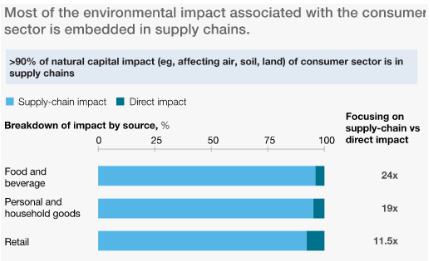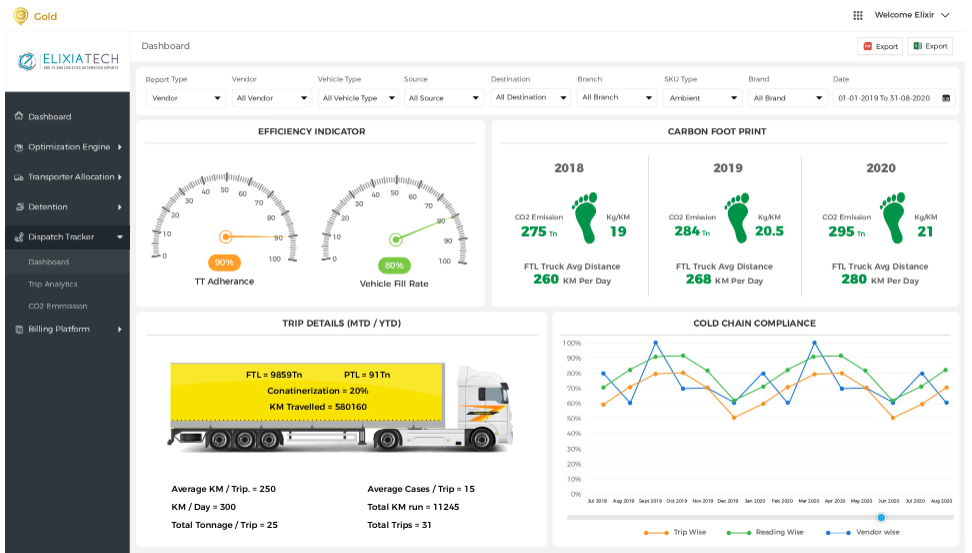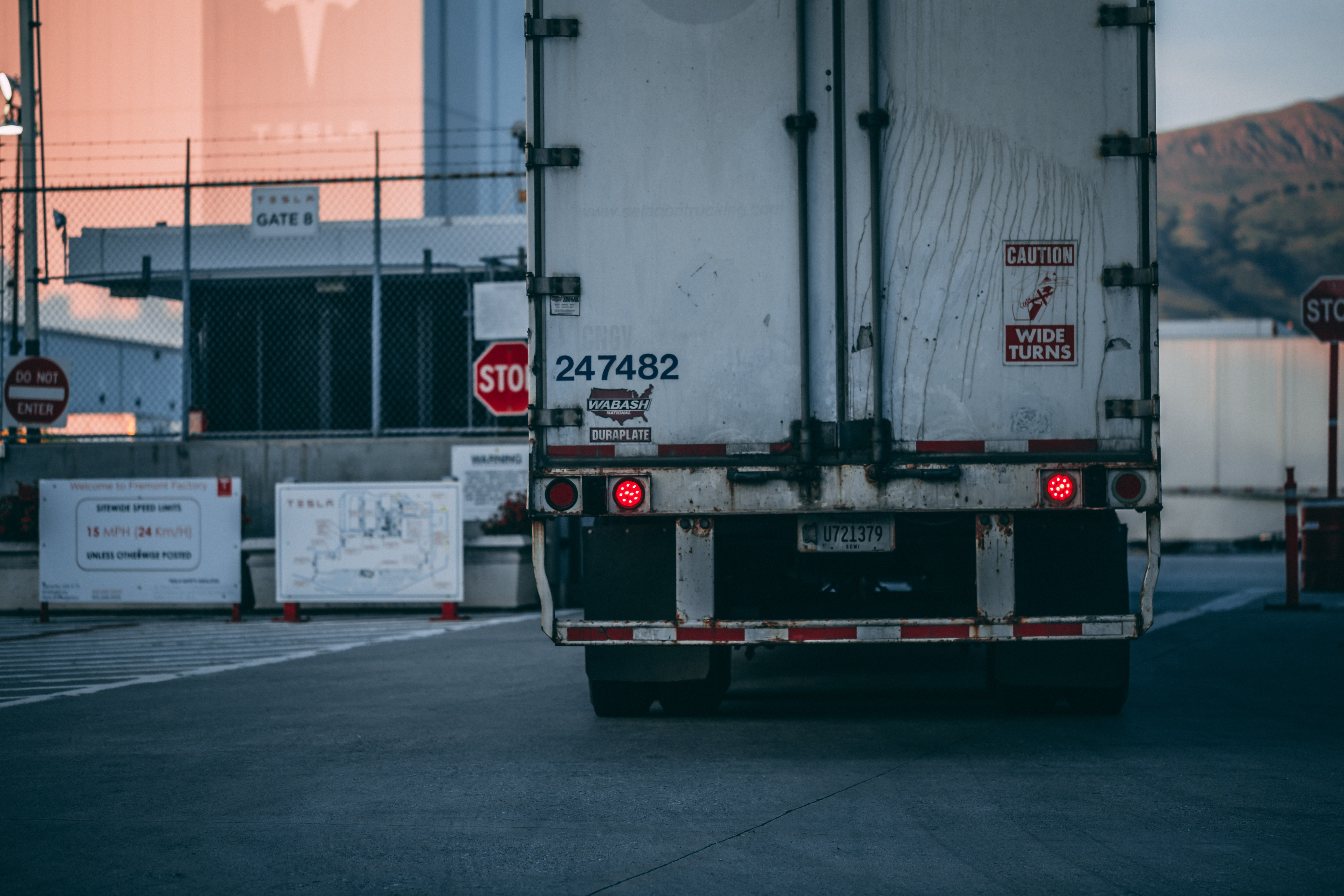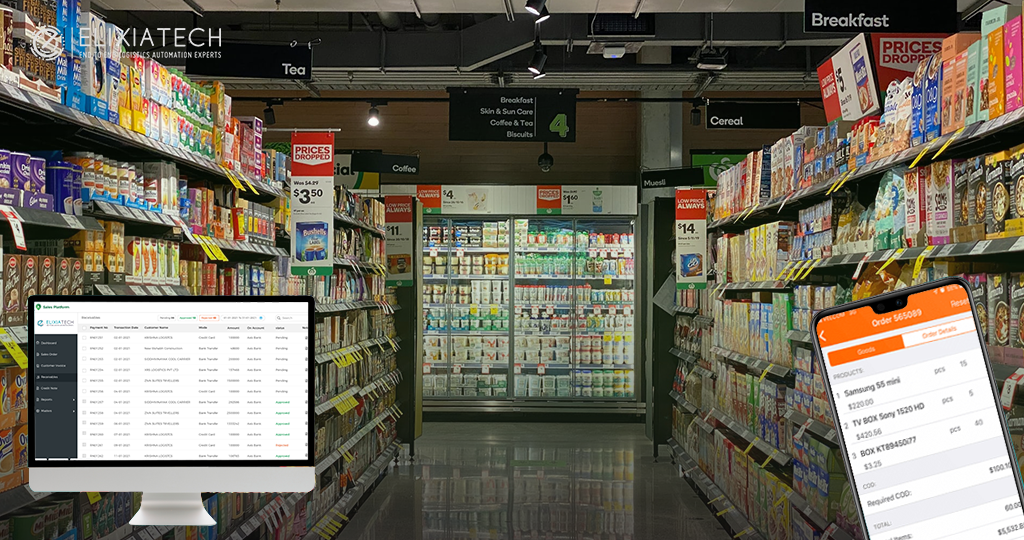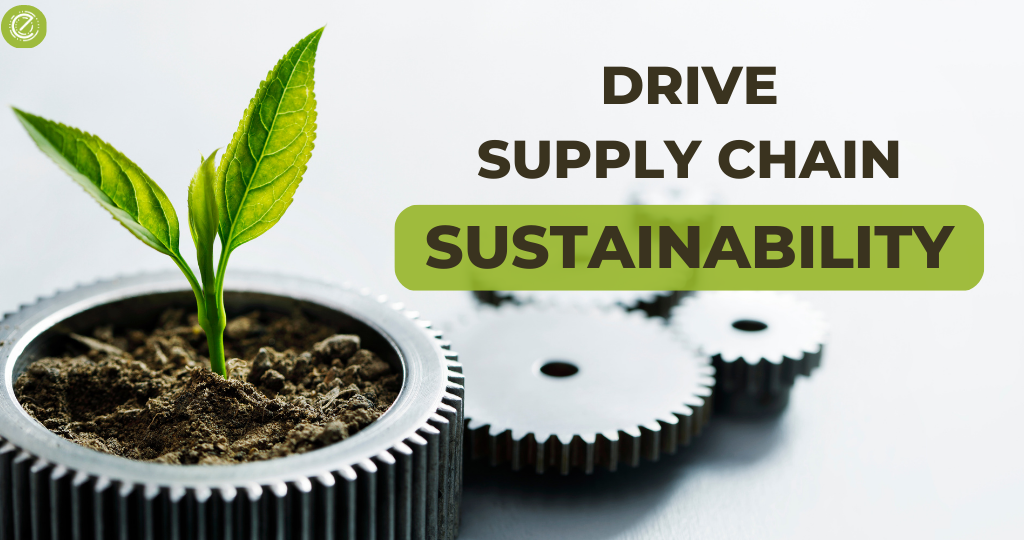
How to drive Supply Chain Sustainability?
Sustainability has become a hot topic in recent years and for good reason. As the world’s population grows and we consume more resources, it’s becoming increasingly important to find ways to ensure that we can continue to meet our needs without harming the planet. Many industries are now opting for sustainable methods to ensure products we consume are produced and delivered in a way that is environmentally responsible. As a result, supply chain sustainability is now driven, promoted, and adopted by many businesses.
Why do we need supply chain sustainability?
Supply chain sustainability is crucial to ensure that we can meet the needs of the present without compromising the ability of future generations to meet their own needs. According to a report by McKinsey- 90% of companies’ impacts on the environment come from supply chains. According to another survey by CDP – environmental supply chain risks can cost up to $120 billion by 2026.
Supply chain sustainability can also help companies to reduce costs and improve efficiency. By optimizing logistics and reducing waste, companies can save money and improve their bottom line. Consumers, today, are also becoming more aware of the environmental and social impact of the products they purchase, and are increasingly demanding that companies take responsibility for their supply chain practices.
In summary, supply chain sustainability is important for environmental, economic, social, and legal reasons. By ensuring that the supply chain is sustainable, companies can reduce their environmental impact, improve their efficiency, meet customer expectations, and comply with legal requirements.
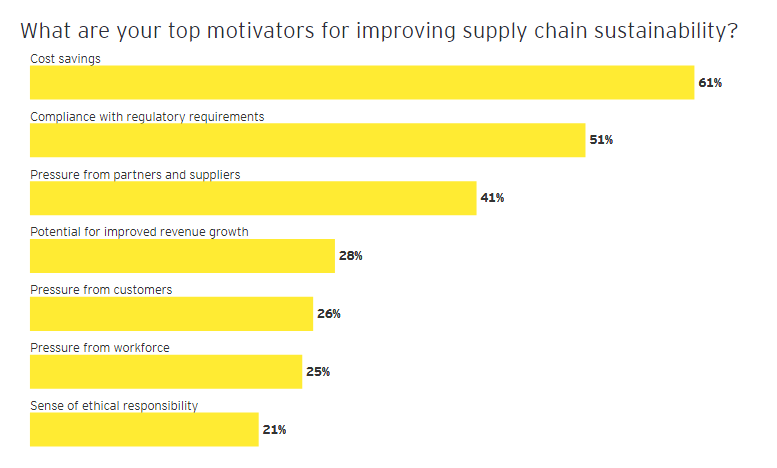 Setting the Intention for supply chain sustainability
Setting the Intention for supply chain sustainability
Achieving supply chain sustainability requires a combination of both the right intention and the right actions. It is unlikely that companies will make the necessary changes to their supply chain practices without a clear intention to prioritize sustainability. EY Supply chain sustainability survey says 61% of the companies are motivated towards sustainable processes with an intention to achieve cost savings. But the intention to achieve sustainability should be beyond the financial measures.
First, the companies should adopt a long-term perspective when it comes to sustainability. Second, companies should collaborate with suppliers, stakeholders, and other industry players to drive sustainability initiatives. This will also ensure that sustainability is embedded in all aspects of their supply chain. Third, companies should be transparent about their supply chain practices and their sustainability goals and progress, communicating this information to customers, stakeholders, and the public. And finally, the company should continuously monitor, evaluate, and improve its processes to achieve its goal of supply chain sustainability.
Key Steps to drive supply chain sustainability
Initiating supply chain sustainability requires a strategic approach that involves several steps. Start with these basic steps:
(i) Define sustainability goals & set expectations
The first step is to define the sustainability goals that you want to achieve in your supply chain. This may include reducing greenhouse gas emissions, minimizing waste, promoting ethical sourcing, or enhancing social responsibility. Then communicate your sustainability expectations clearly to your suppliers. These expectations should include specific sustainability goals, timelines, and metrics to measure progress.
(ii) Identify key suppliers & evaluate their sustainability performance
Once you have defined your sustainability goals, identify the key suppliers in your supply chain who can help you achieve those goals. This may include suppliers of raw materials, transportation providers, or manufacturers. Then, evaluate the sustainability performance of your key suppliers and identify areas where they need to improve their sustainability performance.
(iii) Monitor and measure progress
Continuously monitor and measure the progress of your sustainability programs to ensure that your suppliers are meeting your sustainability expectations. Use sustainability metrics to track performance and identify areas for improvement. Collaborate with your suppliers to share best practices, knowledge, and resources to promote sustainability across your supply chain. This collaboration will help create a culture of sustainability that benefits everyone involved.
By following these steps, you can create a sustainable supply chain that benefits your business, your suppliers, and the environment. A more mature supply chain can implement and deploy a strong software solution to carry out these steps and implement sustainability.
Software solutions provide visibility across the supply chain by identifying areas of inefficiency and waste. This can help organizations reduce their environmental impact and improve their sustainability performance. It can also automate the supply chains processes like data collection and reporting, making it easier to manage sustainability performance. The reports generated from the supply chain software can help organizations identify areas of improvement and take corrective action where necessary.
Elixia’s intelligent & sustainable delivery software solutions
Elixia provides a range of smart software to sustainably track, monitor and manage the delivery processes of all logistics segments. Our solutions constantly monitor the areas of high carbon footprint like fuel consumption, distance traveled per trip, vehicle utilization, route optimization, cold chain compliance, etc. It also suggests the most cost-effective, process-efficient, and sustainable solutions to complete the logistics and transportation movement. It sends real-time alerts to the stakeholders in case of deviation, so that they can take immediate corrective actions. The system generates detailed reports and dashboards to constantly evaluate the supply chain sustainability index. This way, our solution helps organizations achieve supply chain sustainability by providing visibility, data analysis, collaboration, monitoring, and automation.
